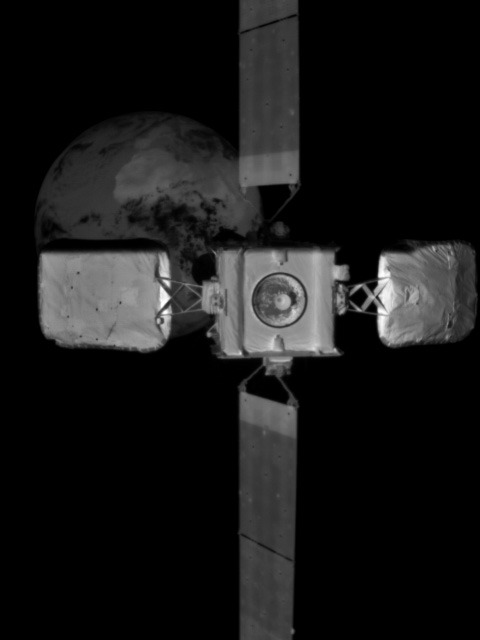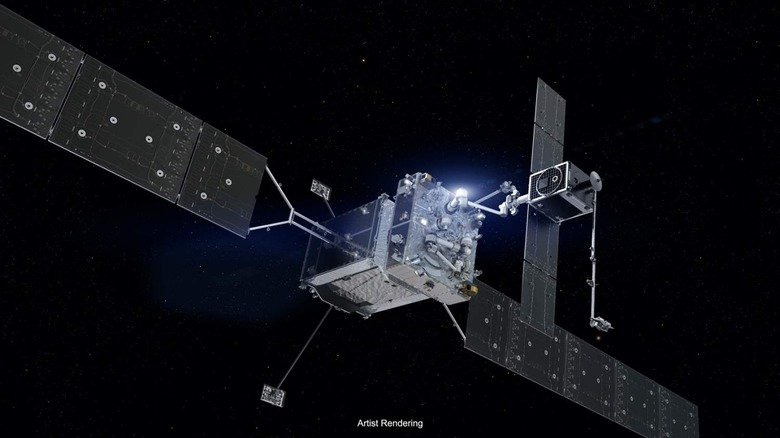A Groundbreaking Satellite Just Rescued Another From Its Death Orbit
Two satellites docking, while still in space, sounds like the plot of a sci-fi movie, but that's just what Northrop Grumman has done to extend the lifespan of one of Intelsat's TV satellites. IS-10-02 may not have an interesting name but it's certainly important to Intelsat, being responsible for part of the company's satellite TV service across Europe, the Middle East, Africa, and South America.
Problem is, satellites don't last forever, but servicing them has traditionally been off the table. Providers are generally forced to launch a fresh satellite instead, which is both expensive and leaves more space junk to accumulate in orbit around Earth. That's already led to concerns that projects like the International Space Station could be at increasing risk of tech-trash collisions.
What Intelsat and Northrop Grumman did instead was launch a second satellite, which docked with IS-10-02 to provide life-extension services. Known as the Mission Extension Vehicle-2, or MEV-2, it basically docks with a satellite that's reaching the end of its onboard fuel supply, and then uses its own thrusters and fuel to maintain the geostationary orbit. In the image below, taken by MEV-2, you can see the Intelsat satellite as the two came together.

It's the second time the two companies have used the system. Back in February 2020, MEV-1 docked with Intelsat IS-901: the first time two commercial satellites had achieved that milestone. However that time, both IS-901 and MEV-1 met outside of the Intelsat satellite's usual geosynchronous orbit. That involved IS-901 rising to an orbit roughly 180 miles higher, where it met with MEV-1.
This time around, MEV-2 met with IS-10-02 without the Intelsat satellite needing to divert. That's in important point, since it took about three months for IS-901 to extend its orbit the first time around, forcing Intelsat to transition TV customers onto another satellite.
The two Mission Extension Vehicles each have fuel for around fifteen years of service. Northrop Grumman's agreements with Intelsat is for five years acting as propulsion and altitude control for each of the TV satellites; after that, the MEVs will detach and move on to supply those services to other clients.

In the pipeline, meanwhile, are other variations on the theme. Mission Extension Pods, for example, will be smaller and cheaper versions, only capable of delivering orbit control. They'll be installed by the MRV, or Mission Robotic Vehicles, shown in the render above, which will be able to not only handle orbital adjustments but also install new hardware to satellites already deployed. Northrop Grumman expects to launch the first MRV and MEPs in 2024.
